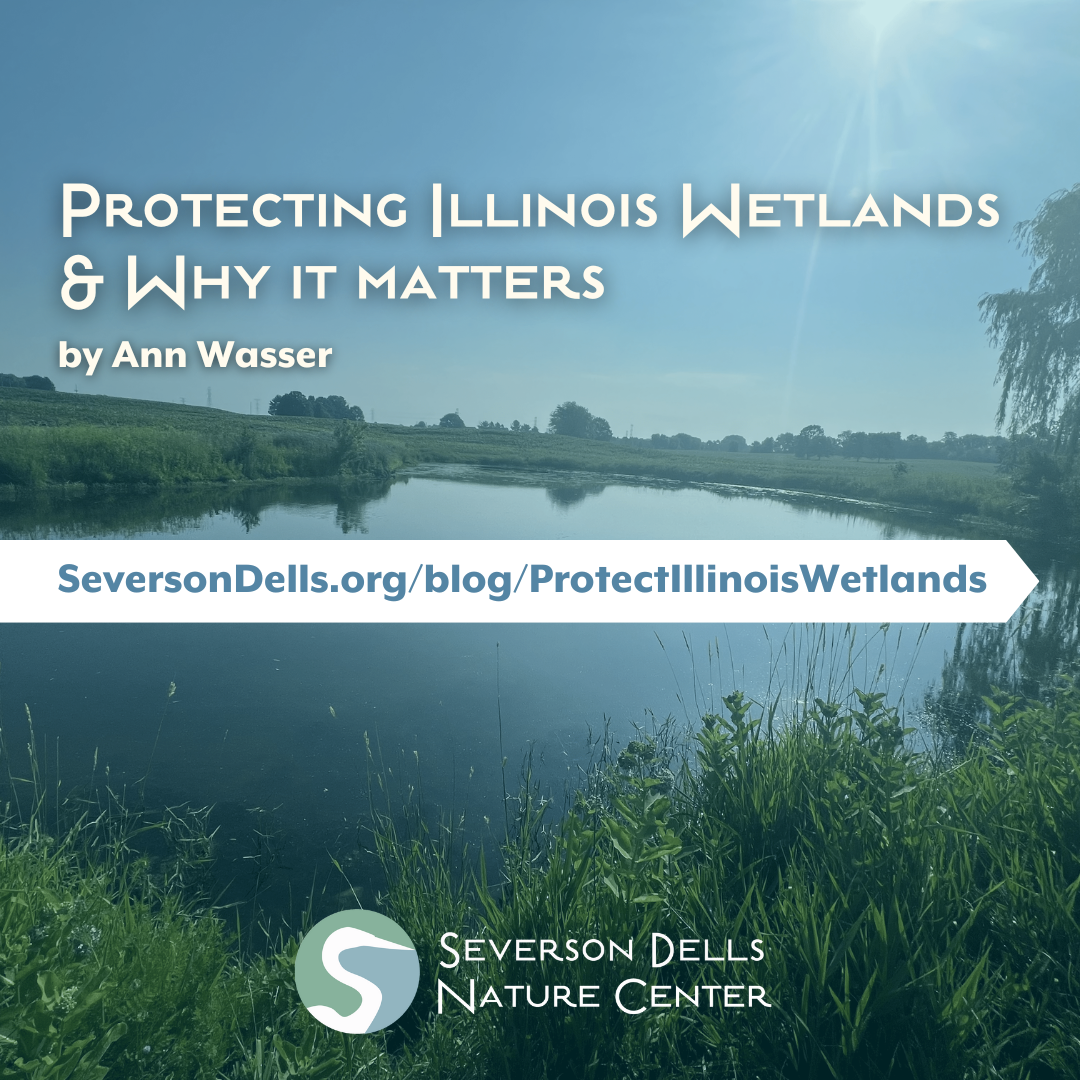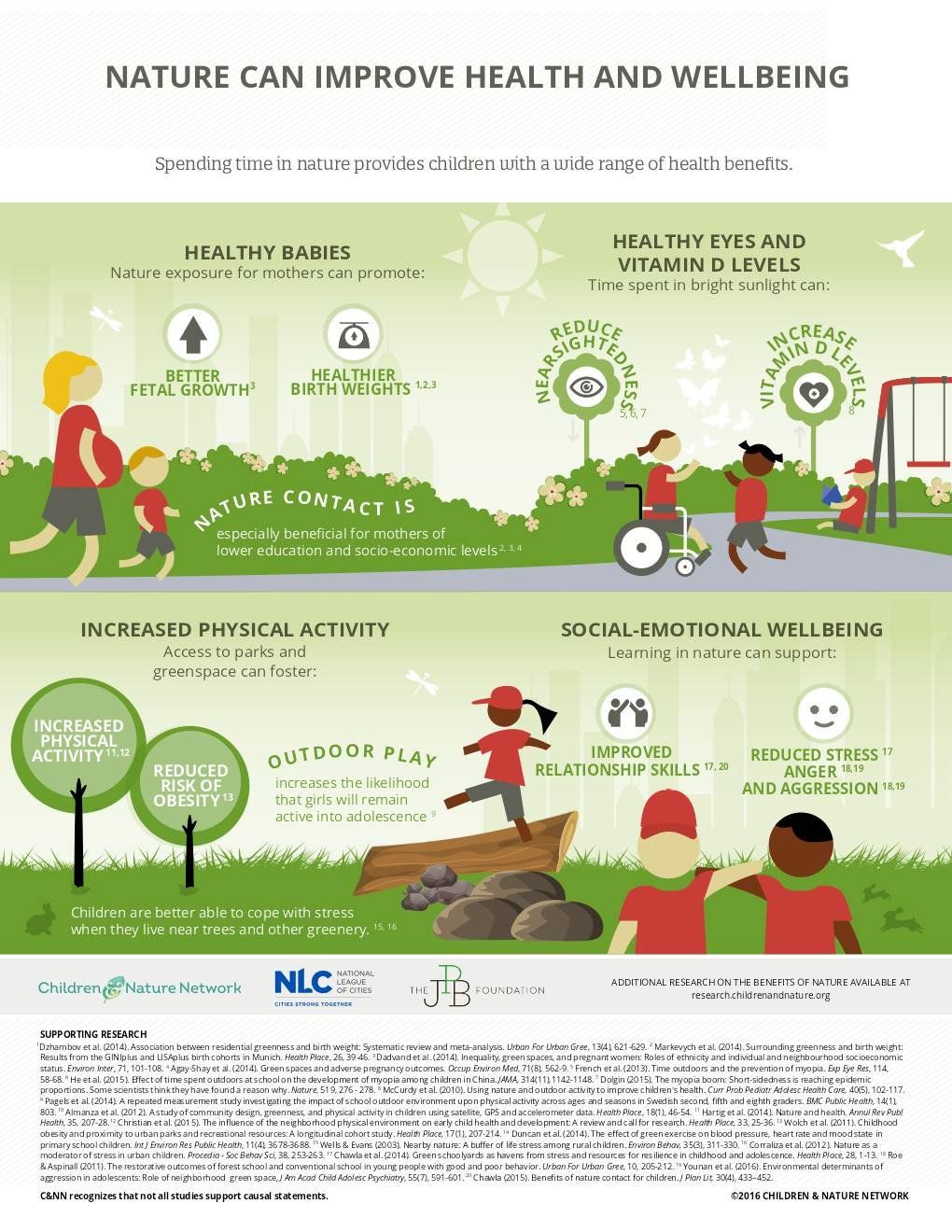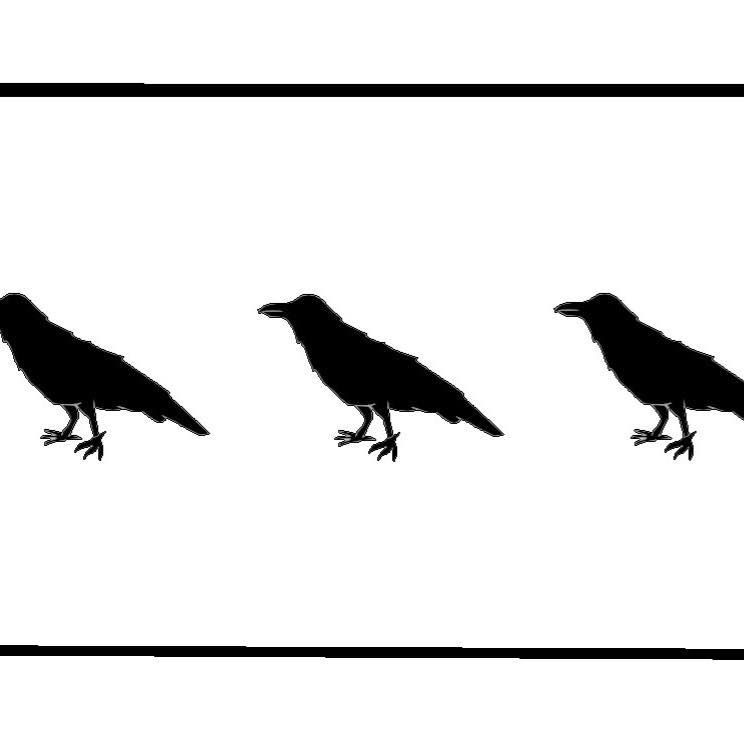FIELD NOTES BLOG
Nature's Role in Early Childhood
*please note: This blog was adapted from a blog series authored in 2023.
It may be summer, but learning never stops! Early childhood education is essential for lifelong success. Ready to Learn, led by Alignment Rockford, is Rockford's regional coalition of The Basics Illinois Network, a program focused on supporting families in preparing their young children for kindergarten and beyond. The goal is to reduce environmental risk factors and to enhance access, equity, and quality programming and resources. Ready to Learn wants all Rockford area children to have the opportunity to thrive, learn and grow!
There are five Basic Principles that prepare children for a lifetime of learning and success. The Basic Principles are "Maximize Love and Manage Stress," "Talk, Sing, and Point," "Count, Group, and Compare," "Explore through Movement and Play," and "Read and Discuss Stories" and you can access each principle by clicking the highlighted words. Each of The Basic Principles is broken up into two age categories: 0-12 months and 12-36 months. The tips and activities are age appropriate, easy to do, and fun for everyone!
At Severson Dells, we understand the importance of early childhood education and how we can help educate children through active play and learning in nature. Time spent outside can lead to lifelong success. Studies show that spending time outdoors and in nature as a child can positively impact academic success.
Maximize Love and Manage Stress in Nature
The first of the five Basic Principles coming from the coalition of The Basics Illinois Network is to maximize love and manage stress. Here at Severson Dells Nature Center we want you to be able to use nature as a resource to help you accomplish maximizing love and managing stress.
Maximizing love allows infants and toddlers to thrive in the world. When the world is a loving, safe, and predictable place they are able to develop effective methods of managing their feelings and behaviors. The outdoors is an effective way to help allow infants and toddlers to experience new positive stimuli that with your help they can feel comfortable in.
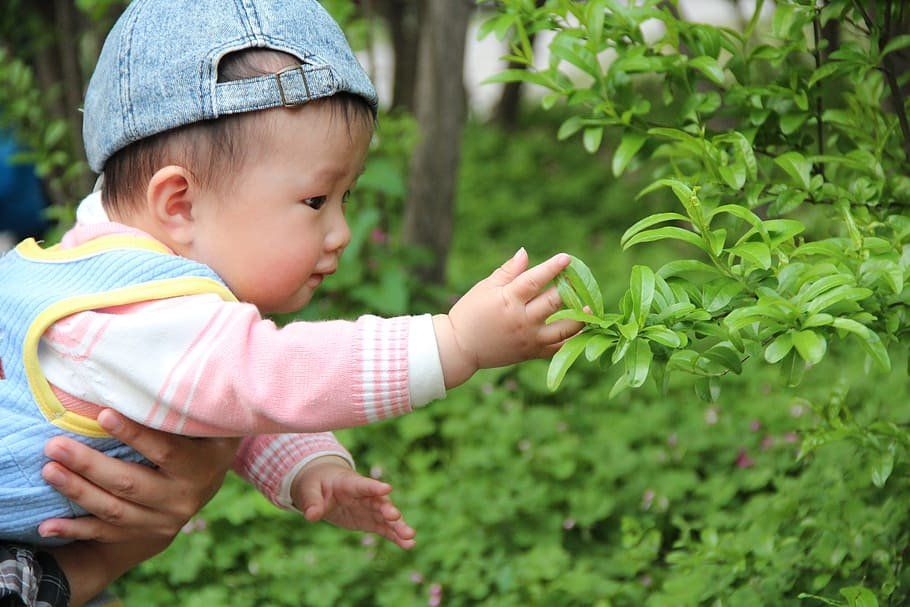
Managing stress is an important ability that children need to learn how to do. Big feelings come with big responsibilities. As adults, we model love, stress management, and behavior control. By showing your children love and demonstrating how to handle big feelings, your child will be better prepared to understand and respond to their own feelings. It also strengthens the bond you share with your children, allowing them to feel security, which gives them the confidence they need to thrive.
Sharing a love for nature with your child can create a bond between you, your child, and the world around us. Responding to natural stimuli in nature can also help your child learn more about their feelings and how they can react to them. So having nature be part of your child’s life is a beneficial and rewarding experience.
As adults, some of us may have things we are afraid of in nature (snakes, spiders, etc). It is really important that we do our best not to transfer those fears to our children, so they aren’t afraid of being in nature. We do want to teach them how to be safe in nature, but not to fear it.
For Infants (0-12 Months)
Establishing a routine is vital from infancy. Making time for moments outdoors will help your child associate time outside with a healthy routine. When thinking about a routine, try scheduling in time for a walk around your neighborhood, local park, or nature area. You can also embrace the fresh air by heading to a grassy area for some play time (it’s great for tummy time!). Encourage your baby to interact with the grass, by sitting or laying on it. Be aware grass can sometimes be overstimulating for babies, so bring a thin blanket as well. A thin blanket will allow them to still experience some of the textures of the grass without being too stimulating. Play as you normally would with your baby, using toys, voices, and facial expressions to convey emotions.
For Toddlers (12-36 Months)
Routines continue to be important during this growing stage and can help regulate transitions and emotions when your child knows what to expect. During your regularly scheduled outdoor time, allow your child to explore. It is helpful to set basic safety expectations and limits. Prompt your child with options, such as which path to take. Throughout your time outside, be sure to express your own emotions when things happen. Maybe a chipmunk ran across the path in front of you and made you jump. You were surprised and it is good to talk to your child about how nature makes us feel. Perhaps the sun is perfect and makes your skin warm, bringing a smile to your face. Use your words to express how it makes you feel. As you express your own emotions, encourage your child to name their own and respond to these emotions. For older toddlers, a great way to put this all together is by jumping off a log. Allow them to choose where they jump and how. When they stick the landing, they may feel happy and full of pride. If they do not stick the landing, they may feel sad or take it as a challenge to try again until they can do it! Talking through their feelings will give them the confidence to try again and continue to try new things in a safe way.
When exploring outside with your toddler, it’s important to support them engaging with nature in a respectful way. Remind them to be gentle and to treat nature how they would like to be treated. Encourage them to observe bugs, but don’t squish them and smell flowers, but don’t pick them. You are your toddlers first teacher, so please lead by example.
Lastly, be okay with your toddler getting dirty. At this age, they are little scientists navigating the world around them and experimenting with each new texture. Let them squish mud in their hands, dig in the dirt and play with rocks and sticks.
Have fun helping your little one explore the world around them as they learn to fall in love with nature.
Talk, Sing, and Point in Nature
The second of the five Basic Principles coming from the coalition of
The Basics Illinois Network is to talk, sing, and point. Nature alone gives us so many different opportunities to share unique things with children that they aren’t able to see inside and you are able to share it all with them. Language and sound is a powerful tool when it comes to connecting children to nature. Babies are learning from the very beginning and much of that learning comes from the vocal interactions families have with them. All around us, nature speaks as well. Allow nature to assist you!
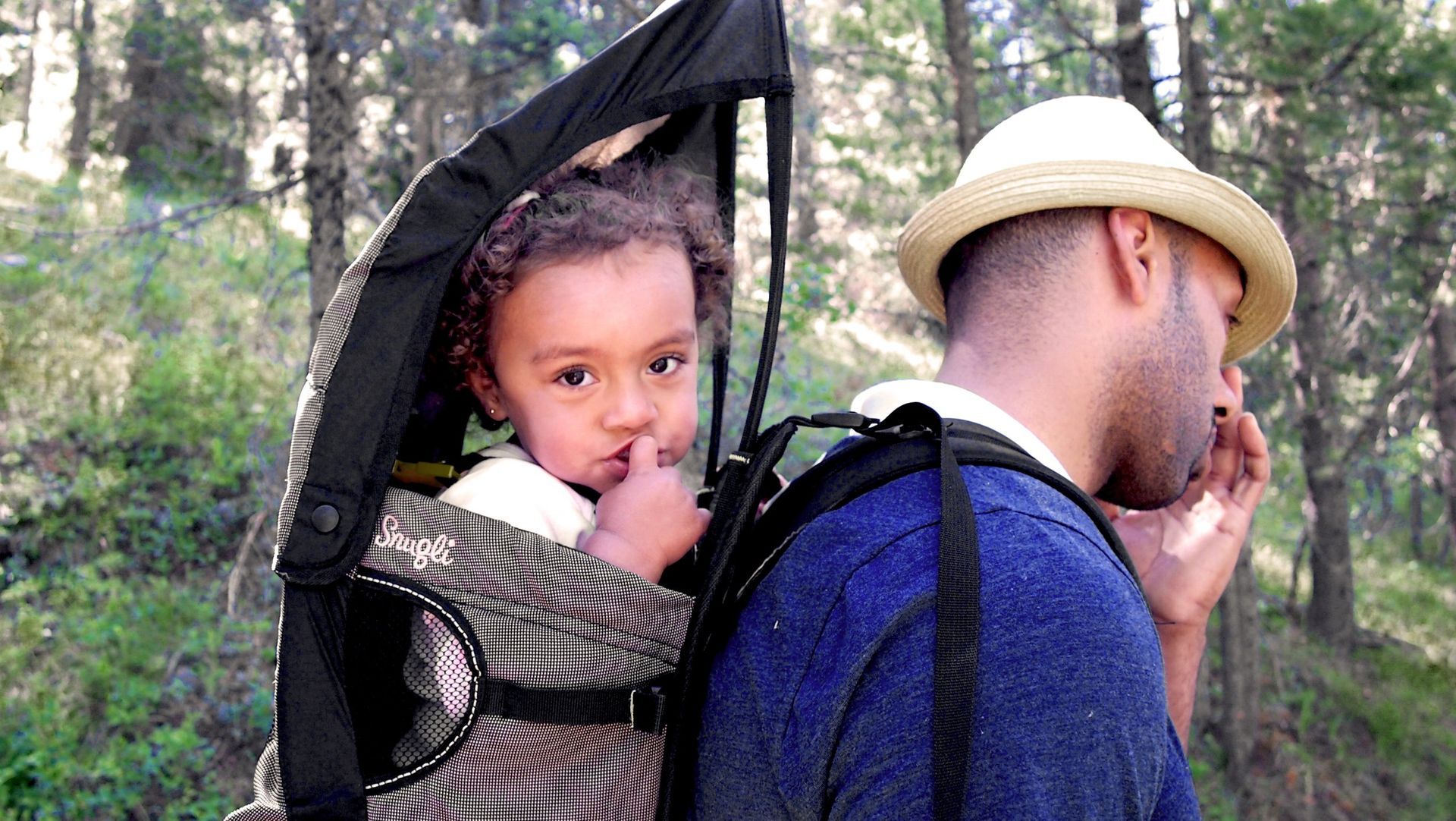
For Infants (0-12 Months)
In your yard, neighborhood, or other natural space, take a walk with your baby, positioning them in a way that they can see all around them. During your walk, point out different natural aspects. Name each item. Follow their interests. You don’t need to be an expert to tell a kid what a flower is or a squirrel. Perhaps your baby is particularly interested in the leaves that you are pointing out. Try to find as many different leaves as you can. Name differences between the leaves you find like this one is pointy and this is brown. Try making up a song to go along with whatever items you are pointing out! All these methods will set your infant up for new opportunities to learn and grow.
For Toddlers (12-36 Months)
In your yard, neighborhood, or other natural space, take a walk with your toddler. Make sure to be specific when you are telling them what you are doing, like “we are going outside to explore a park and see plants” because that gives them a chance to make connections about what you said ahead of time and what happens. Make sure to allow your toddler to point out different items along the way. Perhaps your child points out an ant hill. Ask your child questions to get them thinking about what is happening. Try asking, "What do you think those ants are doing in there?" Be sure to respond and continue the conversation! You may get some fun and silly answers and that is ok! This is your toddler processing the world around them as they see it. If you can think of any songs to go with the items, it is always great to incorporate them even if you make it up yourself. As you leave the ants behind, try singing "The Ants Go Marching." Another activity you can try is to mimic the sounds of nature. Birds chirp and sing all day long. Ask your child to mimic the birds they hear and then mimic the birds with them. Similarly to the ants, ask questions that get them thinking about the world around them and how we all interact with it and each other.
The potential experiences out in nature for all ages are limitless. You just have to give them the opportunities to experience the many different aspects it has to offer and show them the beginning of those experiences with simple exploration.
Count, Group, and Compare in Nature
Did you know you have a mathematician on your hands? That's right! Babies and toddlers are excellent at noticing simple math patterns, such as amounts and groups. Nature is full of patterns and these patterns often repeat in the lives of humans. Children naturally like to compare the sizes and shapes of things through activities like mouthing objects and playing with toys. You can help them compare things in nature too. Establishing that connection between humans and the earth through counting, grouping, and comparing will set your child up for success. Math skills are entwined with other learning domains such as language, social, and emotional development so when they feel physically safe enough to explore the world they are able to truly thrive. The world has aspects of nature everywhere you look and it's important your child feels comfortable and safe near it and that will only come with early experiences interacting with the natural world. Allowing these skills to develop will push your child to be more adept at whatever the world will throw at them.
For Infants (0-12 Months)
Everything is new to your baby right now! This means they will be sponges for information learning from as many things that you will allow them to. This is the perfect opportunity for your child to experience nature itself. With your baby, try finding a plant with multiple leaves or a flower with multiple petals. Point to each leaf or petal and count with your baby. Allow your baby to explore these plants through their senses (avoid taste), but put a major focus on touch. You can present two different plants to your baby to allow for some comparison. They will feel different textures with each plant and may notice other patterns, such as the quantity of leaves. Helping them understand these differences is also a great way to let them learn different words.
For Toddlers (12-36 Months)
Toddlers will be able to pick up more patterns and different patterns at the same time. You can add new challenges for them to keep learning and expanding their knowledge. The natural world itself is a great way to find new experiences and here you can try this fun scavenger hunt that anyone can use!

With this simple scavenger hunt you can look for all kinds of shapes, colors, and textures! It's a fun challenge that can get your child to practice their observation skills. As you explore outside with your toddler, follow their interests and talk with them about what they observe. This not only helps them with noticing patterns and their language development, but improves their comfort and confidence in nature.
Here is a great activity* from our friends at Little Pine Learners: https://littlepinelearners.com/nature-find-and-count-math-activity/
*We only ask that you not pick anything that is still living.
I hope you enjoy challenging your little one to help them better understand the world through nature's patterns.
Explore through Movement and Play in Nature
Movement and play help keep our children active and healthy while aiding in meeting developmental milestones. Learning to use their bodies is essential for long term success. Nature itself is a powerful teacher that will help their strength, coordination and fine and gross motor skills. The open-ended learning that is available to children out in nature is so valuable. Playing is frequently just kids navigating and problem-solving the world around them.
For Infants (0-12 Months):
Moving your usual movement activities outside is a great way to embrace nature. If your baby does tummy time, try doing this outside on a blanket. Allow them to explore the grass and plants around them. Use objects to play search and find. Mix in natural objects with their favorite toys to spark their interest. All of these add another interesting element to their normal schedules to learn and develop more from. Listening to birds, smelling flowers, and gazing at the clouds are many new experiences that infants can't get inside. All of these empower infants to continue to learn and develop with these new experiences.
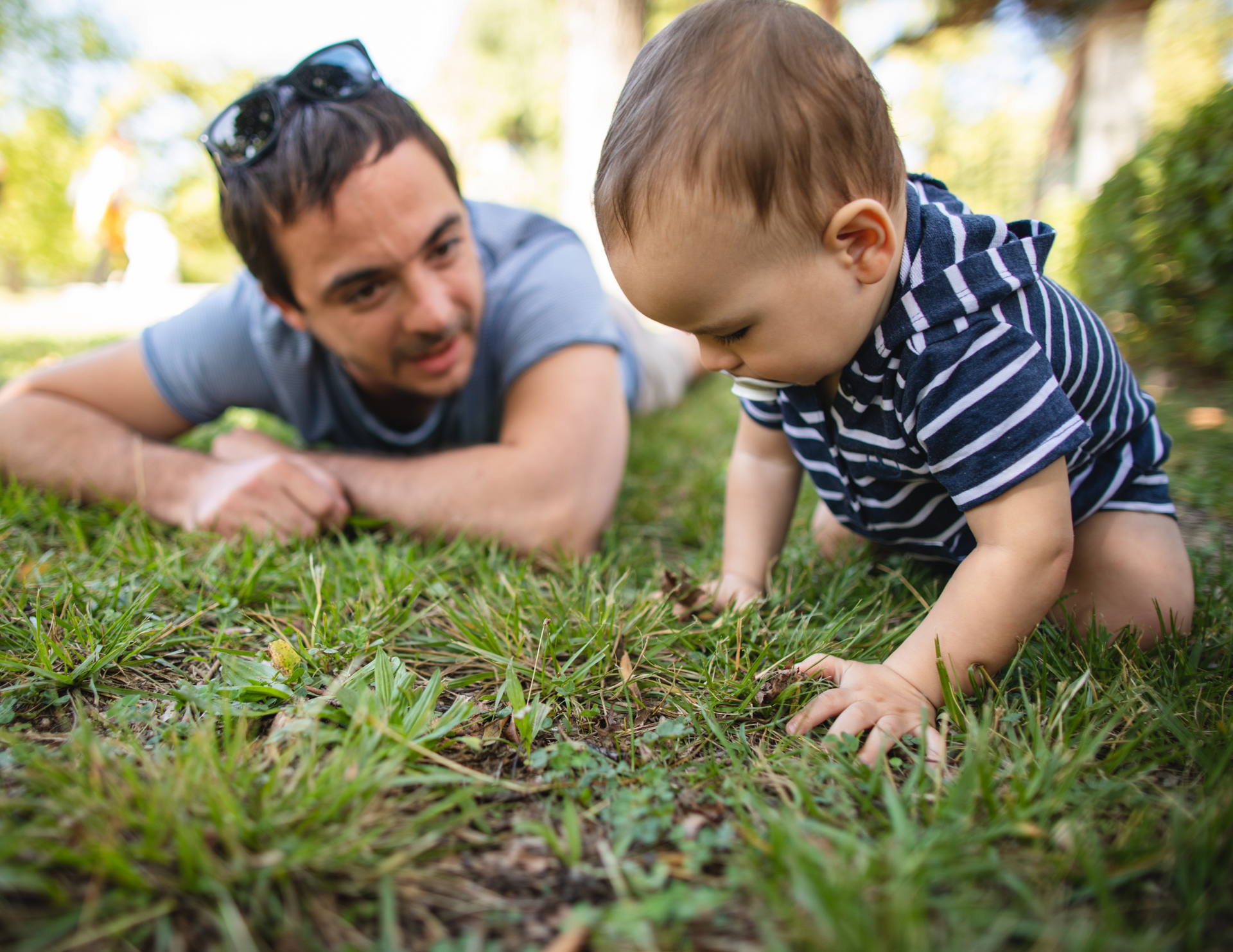
For Toddlers (12-36 Months):
For toddlers, allow them to enhance their problem solving skills through movement. One way you can do this is by making a simple obstacle course! Whether it is in your yard, neighborhood park, or other natural area, take a few natural materials like sticks and rocks and create an obstacle course. Allow your child to problem-solve their way through this course. They may make mistakes, but that is ok! Uneven terrain of natural spaces can help increase coordination and strength, both mentally and physically. For older toddlers, you may want to try allowing them to climb on small rocks and logs, as their strength, balance and coordination allow. These types of small challenges continue to improve their physicality, but will also improve their confidence as they continue to challenge themselves with your support.
Another method for engaging in movement and play is taking a walk, allowing your toddler to set the pace. Watch them stop to examine rocks, bugs, or plants. The action of gently picking up small objects helps hone their fine motor skills. Talk to them about what they see, get them to put words to their thoughts, reasons to their actions, experiences to their memories.
If you are looking for a good bridge from the built environment to the woods to explore nature with your toddler, nature playscapes are a great spot to help build your toddler’s comfort and confidence in nature. At Severson Dells, there is The Grove, but if you are traveling Nature Explore has a comprehensive list of certified nature playgrounds for you to venture to.
Allowing your child to explore nature through movement and play will help them flourish, both mentally and physically. Have fun and enjoy all the benefits that you will reap from time outside with your child!
Read and Discuss Stories in Nature
Over the last few months, we have been taking the five Basic Principles that prepare a child for a lifetime of learning and success and have shown how and why you should take these strategies outdoors. The last of the Illinois Basics Principles is to Read and Discuss Stories. Through this post I want to help you figure out how you can bring the Principle out into nature to amplify all your child’s experiences!

Reading to your child is one of the best ways you can begin preparing them for their school years to come. Why not bring your reading time outdoors! There are many great books focused around nature that can be read in nature. Also some health benefits can come from reading outside. Fresh air and sunlight are important for the human body and using natural light can help reduce eye strain when compared to artificial light.
In need of books? Check out your local library, Little Free Libraries, or your local nature center! Severson Dells Nature Center has a children's library with plenty of nature based books to read and we would be more than happy to share.
For Infants (0-12 Months):
Try laying out a blanket under a nice tree for your reading time. Pick out simple books. Be sure to describe the pictures within the book, pointing out colors and shapes. Try to connect the book to the world around you! If there is grass, leaves or rocks in the book, allow your baby to explore those as well. Be careful not to let them ingest any of these items.
For Toddlers (12-36 Months):
Select a nature based book to read. Find a nice spot to sit and read the book with your child. Allow your child to explore the book and all it has to offer! Take your time while reading and really enjoy the pictures. It is not a race to finish! Ask questions along the way. When you have finished the book, try using it as a scavenger hunt or guide through the natural space you find yourself in! Allow your child to connect the book to the real world through finding examples, objects, and ideas presented in the book.
We hope these have been helpful resources to incorporate more time in nature into your child’s life. Time in nature is beneficial for your child in so many ways, but it is also beneficial for you. Enjoy bonding time with your family in nature and help their development along the way.
*please note: This blog was adapted from a blog series authored in 2023.
RECENT ARTICLES
